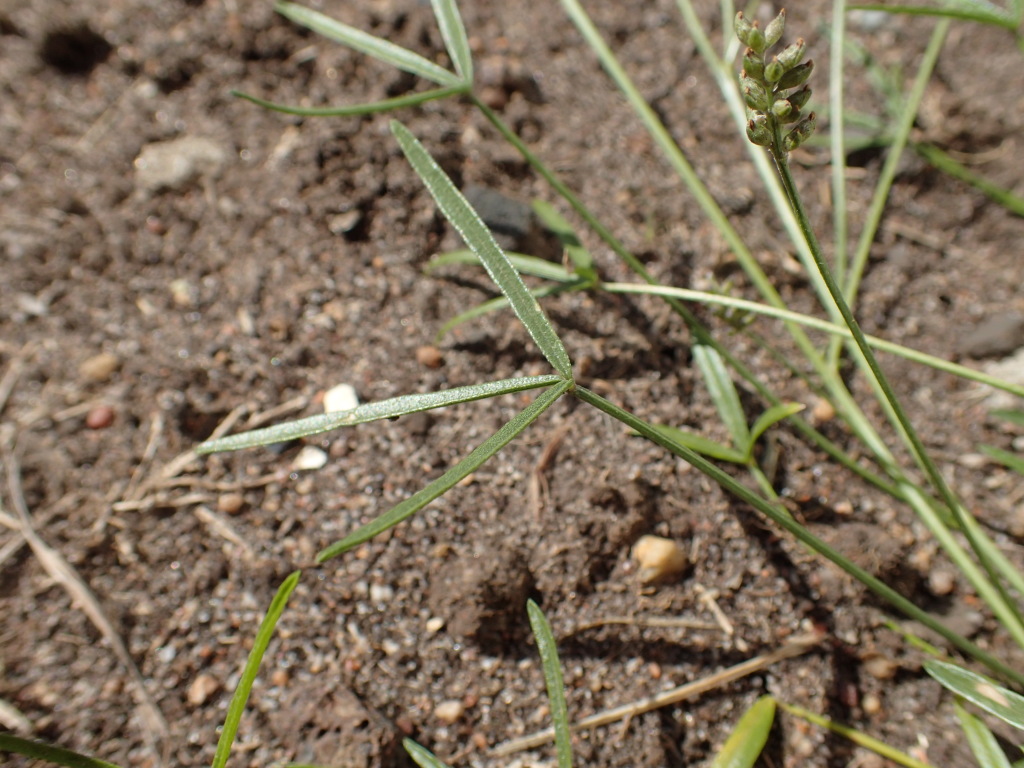Cullen microcephalum
(Rchb. ex Kunze) J.W.Grimes Dusky Scurf-peaTrailing or ascending perennial herb or sub-shrub; stems 30–80 cm long, glabrous or with sparse appressed dark hairs. Leaves palmately trifoliolate, to c. 15 cm long; leaflets lanceolate to ovate-oblong, 2–9 cm long, 5–25 mm wide, upper surface dotted with glands, apices more or less acute, margins entire; stipules acuminate, to c. 7 mm long. Inflorescence rachis 2–9 cm long; peduncles to 35 cm long, much longer than subtending leaves; flowers mostly in 3s along rachis; pedicels to c. 1.5 mm long; bract ovate, to c. 3 mm long, hairy. Calyx campanulate 3–5 mm long, dark-hairy, teeth subequal, about as long as calyx tube, lower one slightly larger and longer than others; corolla 5–7 mm long, pinkish-purple or white. Pod ovoid, c. 3 mm long, included in calyx, glabrous, rugose-wrinkled, black; seed 1, c. 2 mm long, yellow. Flowers Nov.–Apr.
GleP, VVP, VRiv, GipP, WaP, Gold, CVU, DunT, NIS, EGL, EGU, HSF, HNF, MonT, VAlp. Also SA, NSW, ACT, Tas. Widespread but generally uncommon plant, mostly from riparian habitats or other moist shady places.
Plants from the Hawkesdale area are generally less robust and have smaller leaflets and shorter inflorescences. However, these features are quite continuous for the species and may be influenced by factors such as soil-type or altitude. See also notes under C. parvum.
Jeanes, J.A. (1996). Fabaceae. In: Walsh, N.G.; Entwisle, T.J., Flora of Victoria Vol. 3, Dicotyledons Winteraceae to Myrtaceae, pp. 663–829. Inkata Press, Melbourne.
 Spinning
Spinning

